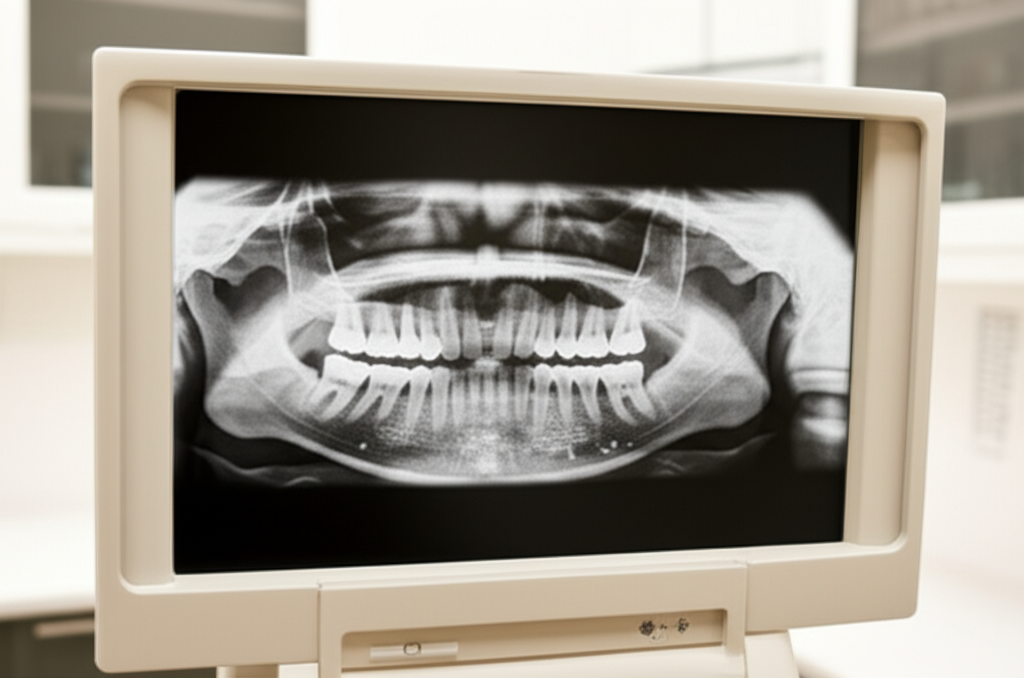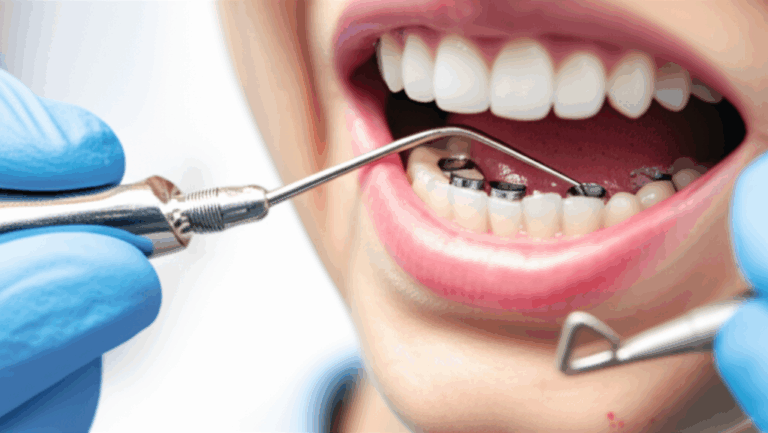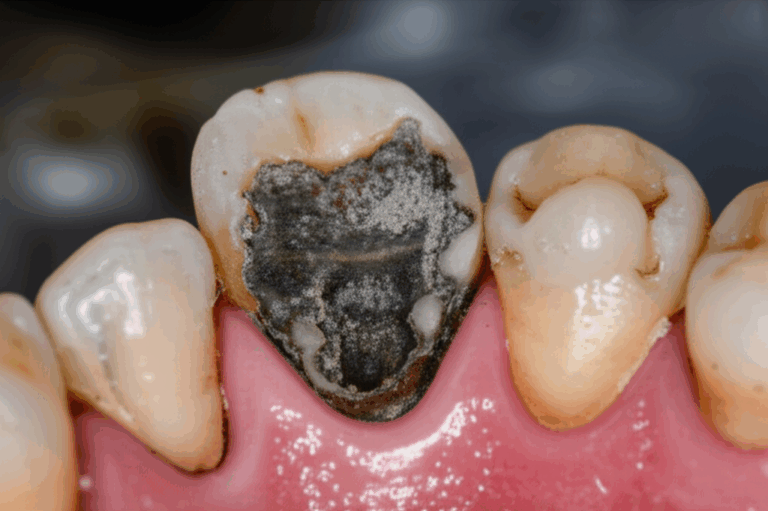
How Much Are Dental Implants in Wisconsin? My Personal Guide to 2024 Costs, Factors, and Affordable Options
Table of Contents
- Single Tooth Replacement
- Multiple Teeth & Implant-Supported Bridges
- Full Arch Solutions: All-on-4, All-on-6, and Overdentures
- Type and Number of Implants
- Location, Dentist Experience, and Tech
- Preliminary Work: What I Needed Before the Implant
- Materials Matter: Titanium vs. Zirconia and More
- Diagnostics and Sedation
- Insurance: What’s Covered—And What Isn’t
- Financing, Payment Plans, and Flexible Spending
- Where to Get Cheaper Implants: Schools, Clinics, and Programs
Article Outline Overview
- Introduction with my personal dental implant story.
- Average prices for implants in Wisconsin, like single, several, and full mouth options.
- Big things that make prices change.
- Easy breakdown of what you’re paying for.
- Tips on paying and places to get help.
- How I picked my own dentist, with my advice.
- Looking back: was it really worth it?
- Real price tables from my own checking around.
- Last thoughts and links to learn more.
Introduction: My Journey into the World of Dental Implants
If you’re wondering, “How much are dental implants in Wisconsin?” I’ve been there myself. That question started me on a fast ride—shock at the price, confusion, a little hope, and finally, a smile I could feel good about. There isn’t just one answer that works for everyone, but it doesn’t have to be confusing.
Like you, I wanted more than just an average number. I needed to know prices for my case—what changes the cost? How do people save money? And is it worth it versus getting dentures or a bridge?
In this guide, I’ll share everything I learned, step by step and dollar by dollar. I’ll lay out all the main costs, how the process worked for me, and what you should expect in Wisconsin in 2024. Here we go.
Average Dental Implant Costs in Wisconsin (2024 Estimates)
When I started calling offices, I saw that different dentists gave very different prices—even in the same area. So, it was clear: you need to look at price ranges and averages, not just a single number, because everyone’s situation is a bit different.
Single Tooth Replacement
When I got one implant for a back tooth in Wisconsin, my cost was right in the normal range:
- Average Cost: $3,000 to $6,000 per tooth
- What’s Included: The implant screw, the connector (called an abutment), and the tooth-shaped crown (usually made of ceramic or zirconia). Sometimes, X-rays are included too.
It is a lot of money. When you break it down, most of the cost is for the little metal root that goes under your gum. My dentist said this part is what really keeps your jaw healthy and your teeth strong.
Multiple Teeth & Implant-Supported Bridges
If you need more than one tooth, you can sometimes save with what’s called an “implant-supported bridge.” Instead of one implant for each missing tooth, you can have two (or more) implants that hold a bridge for several teeth:
- Cost for 2-4 implants with a bridge: $6,000 to over $15,000, based on how many teeth you need and how tricky the work is.
Often, this is cheaper per tooth than getting a bunch of single implants. I wish I knew this earlier!
Full Arch Solutions: All-on-4, All-on-6, and Overdentures
Here’s where the price really goes up—if you want to replace a full row of upper or lower teeth. I looked at these choices when my dad wanted new teeth for his whole top jaw:
- All-on-4 Dental Implants: $20,000 to $35,000 per arch (top or bottom)
- All-on-6: $25,000 to $40,000 per arch (if you need even more strength)
- Removable Implant-Supported Overdentures: $8,000 to $20,000 per arch
All-on-4 is a well-known way to replace all your teeth. Instead of regular dentures that wiggle, this type connects to four (or sometimes six) implants, so you can bite hard and eat almost anything. The removable type is not as solid as the fixed one, but better than old-school dentures and pops in and out for cleaning.
If those numbers sound huge, you’re not alone. I was shocked too. But knowing what you get—and that it can last for years—really helps make sense of things.
What Makes the Price Go Up or Down? Factors That Shaped My Own Dental Implant Bill
There’s no “normal” price for dental implants in Wisconsin. Some big things changed what I finally paid. Here’s what hit my own bill—and what could matter for you.
Type and Number of Implants
The more teeth you want to fix, the more you’ll pay. That’s pretty clear, but there’s more to it. I even learned about “mini” implants when I was looking for ways to save—they’re smaller, sometimes cheaper, but not always as strong for biting.
What the implants are made of also changes the price. Titanium is the usual, and often a bit less than zirconia—a pretty white material that some people need if they are allergic to metal.
- Mini implants: Might save some money, but check with your dentist if they’re right for you.
- Titanium vs. Zirconia: Zirconia costs more, but it looks nicer and is good if you have metal allergies.
Location, Dentist Experience, and Tech
Big city or small town, I found prices change. In Milwaukee or Madison, dental offices cost more to run, and you’ll see more new technology—so prices are a bit higher. In small towns, you might find it’s cheaper, but sometimes you need to travel for an expert.
The better your dentist’s skills (like a well-trained oral surgeon or tooth specialist) and the more modern the clinic (think 3D scanning and computer planning), the more you’ll pay—but usually, the results turn out better too.
I picked a dentist who was part of the American Academy of Implant Dentistry. He was more expensive by a few hundred bucks, but I felt better about it.
Preliminary Work: What I Needed Before the Implant
Lots of folks miss this: you might need extra stuff before you even get the implant.
Tooth Extractions
Got a broken tooth? I did. To pull it, I paid about $200 with regular numbing. Big or tricky extractions (like wisdom teeth) are more.
Bone Grafting
I was surprised I needed a bone graft. If your jaw bone has gotten too thin or shrunk, you can’t get a good, strong implant. My dentist charged $600 to add new bone there. Sometimes people need more than one graft, or bigger ones, and that adds up.
Sinus Lift
This is just for upper teeth. My neighbor had to get a sinus lift—a small surgery to make room for the implant up top. That was an extra $2,000 for her.
Treating Gum Disease
Your mouth needs to be healthy first. If you have gum problems, you’ll need them sorted out before the dentist can do the implant.
Materials Matter: Titanium vs. Zirconia and More
My crown was made of porcelain on metal, and it looked and felt pretty real. Other people may want all-zirconia for extra strength or if they want it to look super natural, but expect to pay $500 more. The brand and type of implant can add to the price too—some of the biggest brands cost extra.
Diagnostics and Sedation
3D X-rays and scans cost me about $300, and some clinics rolled that into the price. Sedation (to help you relax) adds more: laughing gas is cheaper, but if you want to sleep through it (IV sedation), that’s over $1,000 for long appointments.
Breaking Down the Costs: Where Does the Money Go?
Here’s how my final bill looked. I wanted to make sure I wasn’t paying for stuff I didn’t need.
- Implant post: The metal screw—about $1,000 to $2,500
- Abutment: The connected piece—usually $300 to $700
- Crown: The fake tooth—$1,000 to $2,000 depending on what it’s made of
- Surgeon fees: The work to put it in, numbing, and keeping tools clean
- Consult & pictures: X-rays, digital scans, planning—$100 to $500
- Follow-up care: Aftercare, stitches out, advice
For full mouth options, there’s even more—temporary teeth, lab costs, molds, and sometimes fixes months after.
If you want to know more about teeth and how everything works, I found teeth information helpful to understand why each step matters.
Paying for Dental Implants in Wisconsin: My Tips and What Worked for Me
Dental implants are expensive—no way around it. But I did find ways to make it easier on the wallet, and maybe these tips will help you too.
Insurance: What’s Covered—And What Isn’t
For me, dental insurance did not pay for the implant screw. Most plans in Wisconsin call it “cosmetic.” But, sometimes they will pay for the tooth on top or to pull a bad tooth. Some also pay for new bone or the first X-rays.
Tip: Ask if your plan gives you a “lifetime limit” for big jobs. Could be $1,500 or $2,000, but every bit helps.
Some special dental insurances or PPOs pay more for implants. Check with your insurance before doing anything.
Financing, Payment Plans, and Flexible Spending
I used CareCredit (a company that pays the dentist and lets you pay over time) so I could pay the bill over two years. The first year was with no interest, which helped a lot. Some offices work with LendingClub or offer their own monthly plans. If you’re worried about credit checks, some dentists have plans for people with not-so-great credit.
If you have an HSA or FSA from work, you can almost always use it on dental implants. I paid for my connector and crown that way, saving on taxes too.
Where to Get Cheaper Implants: Schools, Clinics, and Programs
If you’re short on money and have some time, schools, like Marquette University’s dental school, do implants for less—sometimes 30-50% off what regular offices charge. You get students, but they’re closely watched by teachers. Some local charities and health programs (like Medicaid for people who qualify, or VA care for veterans) pay for some implants, but there are lots of rules.
How I Chose the Right Dentist (And What I’d Do Differently)
Let’s be real. When you’re handing over thousands for your teeth, the cheapest pick is not always best. I learned to look for real skills and good reviews, not just low prices.
How I made my list:
- Searched for “Wisconsin dental implant specialists” and checked who had nice reviews from patients.
- Asked which doctors had special training and could handle tough cases like mine.
- I liked offices that had new technology (like 3D scans), since it helps get things just right.
- Asked for detailed, printed price lists so I could compare.
At my visit, I asked:
- What brands of implants do you use, and why?
- Are checkups and fixes part of the cost?
- What if the implant fails—who pays?
If I did this again, I’d ask more about the lab my dentist uses. Good labs and nice materials, like what an implant dental laboratory or digital dental lab offer, can mean things look real and last longer.
Is It Worth It? The Long-Term Value of Dental Implants in My Experience
I’ll be honest: the big price made me think twice. I could have gone cheaper with a bridge, but here’s why I got an implant:
- Lasts for many years: Old dentures break. My implant is still working great years later.
- Feels like a real tooth: I can eat apples—no moving, no pain.
- Helps keep my jaw strong: Some people’s faces change after they lose teeth. Implants stop bone loss. You might not notice, but it matters a lot.
- Easy to clean: No glue or soaking. Just brush, floss, and get regular cleanings.
For me, the money was well spent—and when I hear my friends complain about denture repairs, I’m happy I chose implants.
Cost Tables: Real Numbers from My Search
These are estimates I found when calling different dentists in Wisconsin. Everyone’s bill will be a bit different.
| Procedure | Average Cost Range (WI) | What Affects the Price? |
|---|---|---|
| Single Tooth Implant (post+abutment+crown) | $3,000 – $6,000 | Material, dentist skill, city/small town, how hard it is |
| 2 Implants with Bridge | $6,000 – $15,000+ | How many teeth, material, if prep work is needed |
| All-on-4 (full upper/lower) | $20,000 – $35,000 | Extractions, type of teeth, sedation |
| All-on-6 | $25,000 – $40,000+ | More implants = more cost, but stronger bite |
| Removable Overdenture | $8,000 – $20,000 | Type of implant, quality of fake teeth, how many implants |
| X-rays, CT scan, consult | $100 – $500 | Some places include this if you go ahead with treatment |
| Tooth pull | $75 – $300 per tooth | Easy vs. hard removal, how you are numbed |
| Bone grafting | $300 – $2,500/site | How much bone, what it’s made of, how tricky it is |
| Sinus lift | $1,500 – $3,000 per side | How much space needed, what is used |
| Sedation/Anesthesia | $50 – $1,500+ | Laughing gas vs. IV sedation, how long it takes |
Most places said the average success of implants in Wisconsin was about 95-98% after ten years. Care for them like real teeth, and you’ll likely have many worry-free years.
Conclusion: Making the Best Decision for Your Smile—and Wallet
My trip to getting a dental implant in Wisconsin began with questions about price. It finished with a strong smile I feel good about. If you’re still checking and weighing your options, don’t let the price scare you. Ask lots of questions. Get details broken down just for you. Think about payment plans, and don’t be shy about dental schools or special help.
Most of all, pick someone who cares about your health, not just your cash. Your smile matters—a few extra dollars now can mean years of worry-free eating and smiling.
Further Resources: Learn More About Teeth and Implants
- Want to know more about how implants keep your jaw strong and how your whole mouth works? Check out this teeth health page.
- If you want to learn about other choices (like dentures), see this removable denture lab.
- For tips on cleaning and keeping your teeth (and implants) nice, check this dental care guide.
Thanks for reading my honest guide. If you have more questions, make an appointment—the next step is much easier when you feel ready.








